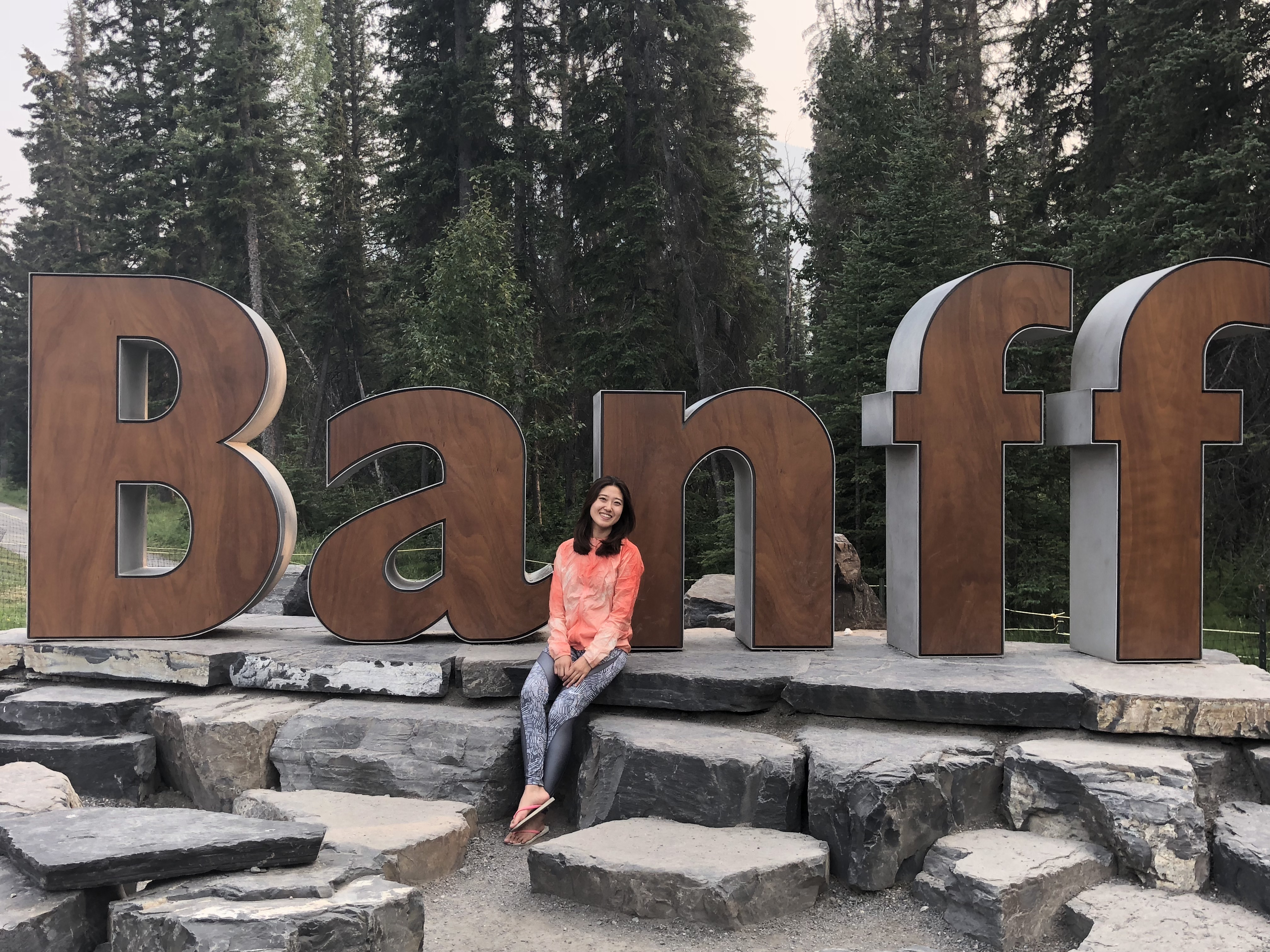The year was 1883. The Canadian Pacific Railway was stretching a path across the young country, helping people settle the wide open spaces of the West. Three employees with the railway stumbled upon a series of hot springs high up in the Rocky Mountains. Their timing was outstanding. This was an era when natural spas around the world were attracting wealthy globetrotters, with railroads providing the needed transportation. The three ‘discoverers’ predicted personal riches and saw big dollar signs. So did the Canadian government. Within two years, the prime minister proposed a fairly new concept – the creation of a public reserve, leading to Canada’s first national park, with Banff Springs at its centre. The name “Banff”, by the way, was given to the area by the then president of the Canadian Pacific Railway who was born in the Scottish town of Banff.
The original hot spring ‘discovered’ by the three railway employees has two parts – a cave part and a basin part. It was transformed into a spa for that era’s rich and famous. Today, it forms part of a pretty cool museum near the town of Banff. Here is the “Cave area”:
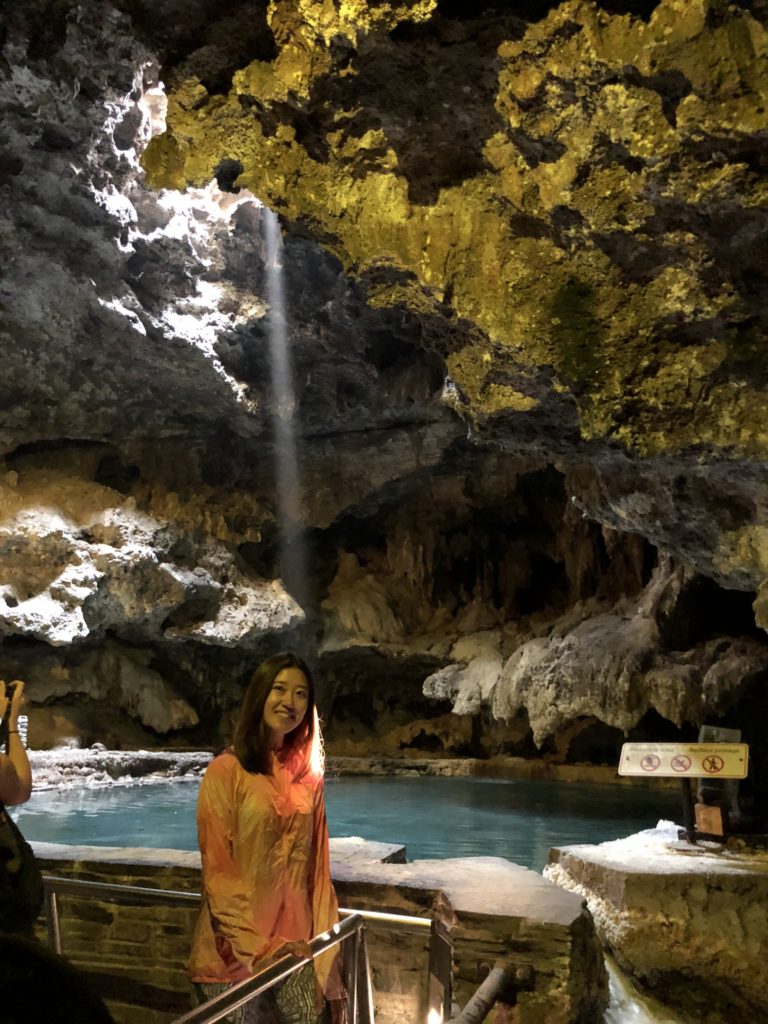
This same spring connects to an outside pool called the “Basin area”. Check out this 1920’s photo:
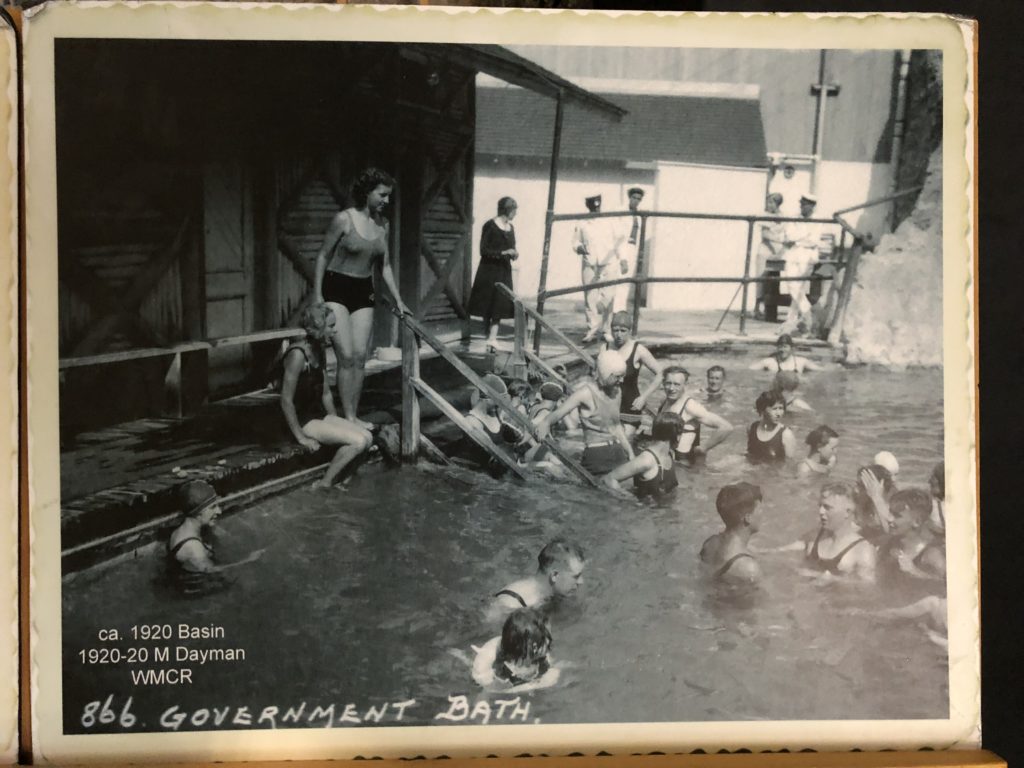
Here is the same pool today, no longer open for swimming:

In case you’re worried, there are still operating hot springs in and around Banff. After one of our hikes, we spent a few hours at the Upper Hot Springs in Banff. It’s exceptionally popular, meaning you’re sharing the space with about 100 others, but it is a refreshing experience.

Just a quick, really interesting side note. In the early years, the new park’s administrators worried that wealthy east-coasters might find the park a bit too wild. They judged certain animals as good and others as evil, and then proposed the extermination of the noxious predators like wolves and coyotes. These animals saw massive population drops over the subsequent decades. Clearly, conservation (in the current sense of the word) was not the primary motive. The modern concept of conservation is just that, a very modern development.
The original town of Banff looked like this:
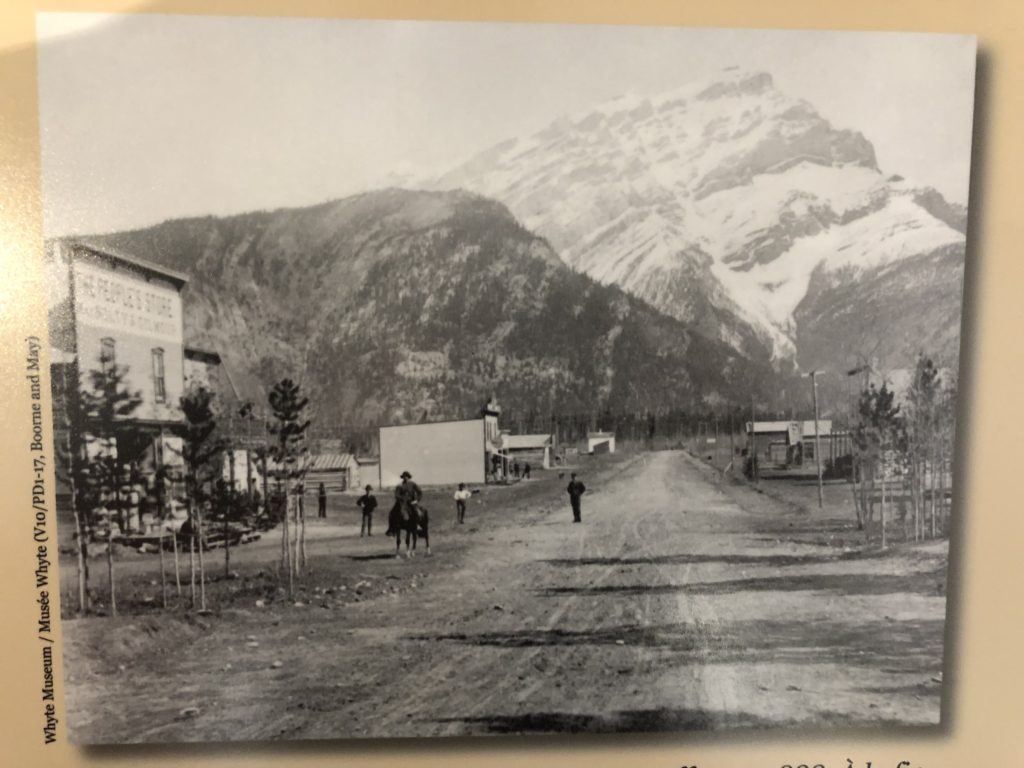
Today, it looks more like this:
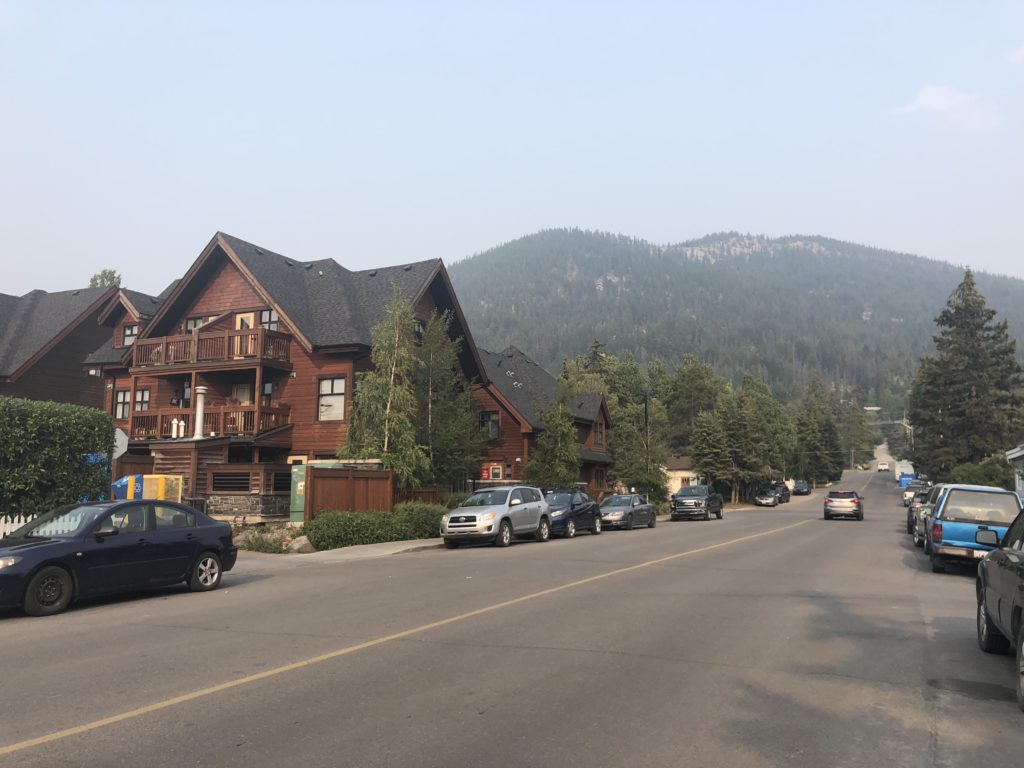
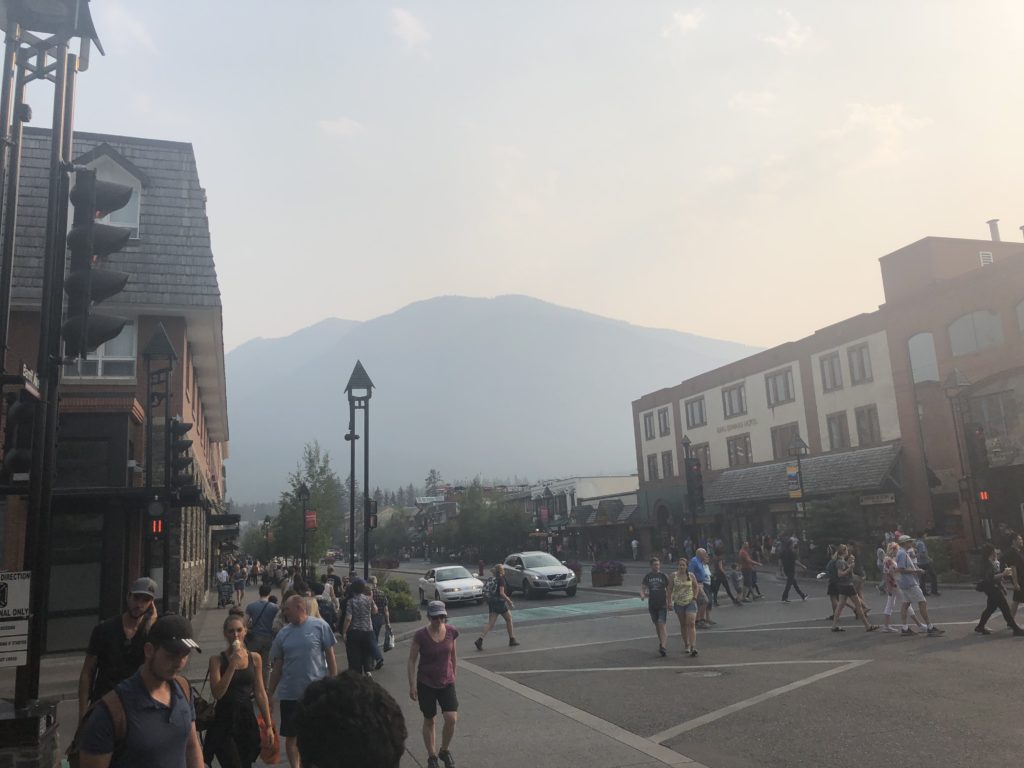
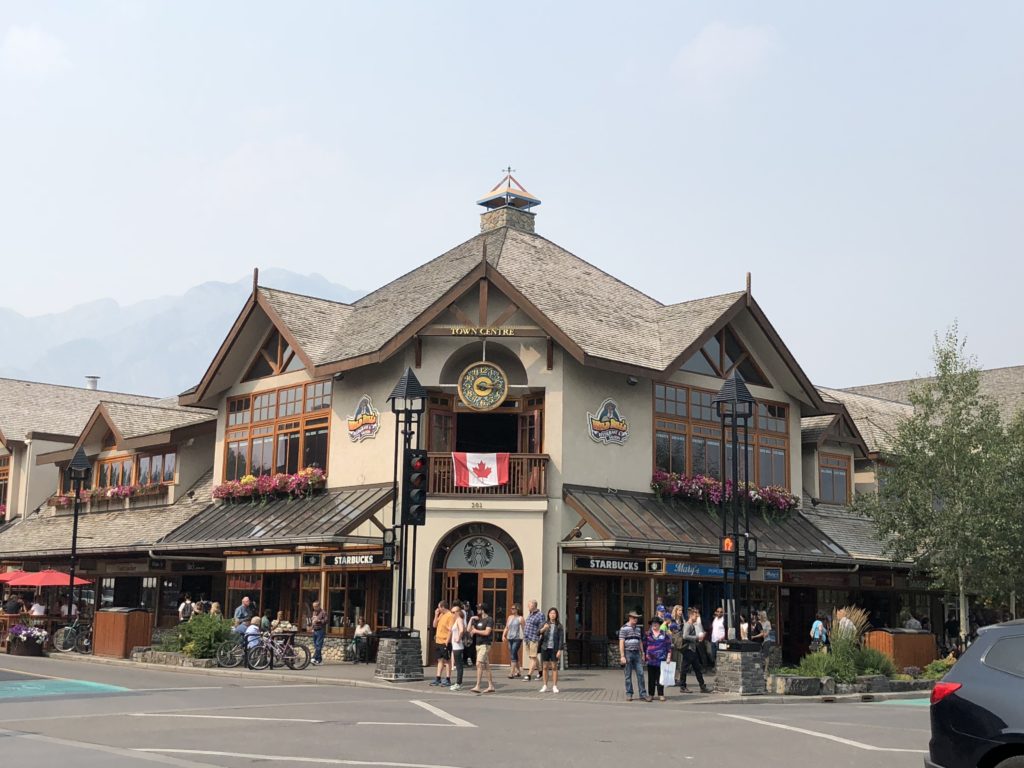
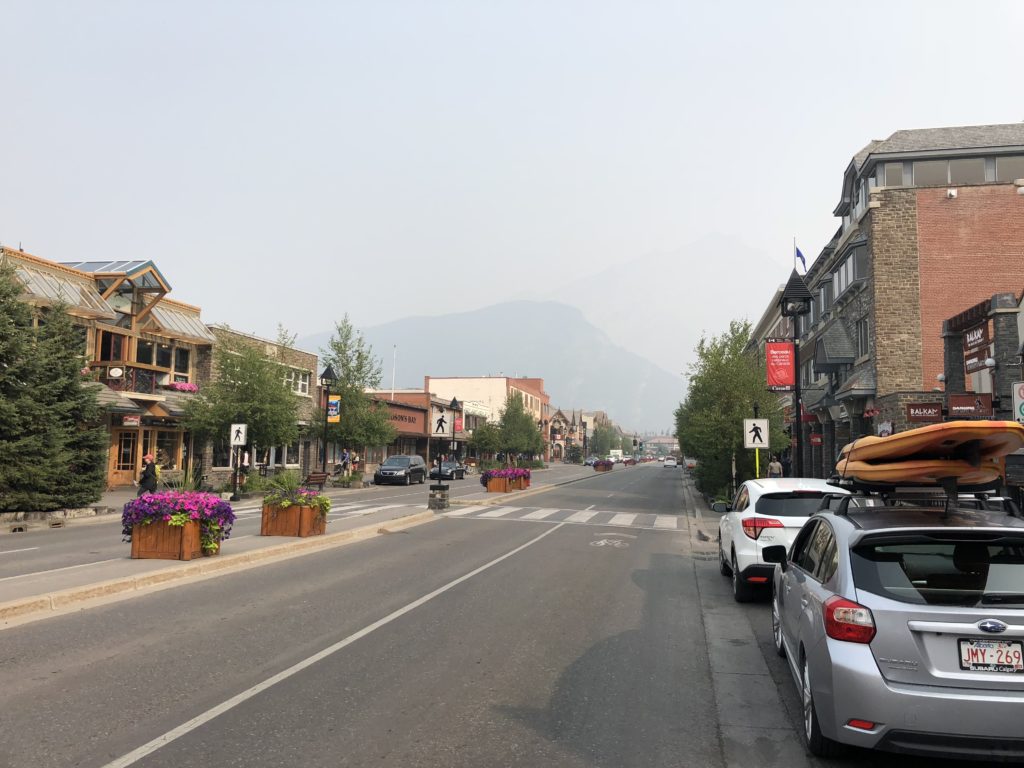
It’s an unusual place. It is actually an incorporated town, one of the few towns in the world located within a national park. It has a permanent population of about 9,000 and gets a whopping four million visitors a year. The town has some amazing historic buildings. This one, the Banff Park Museum building, was completed in 1903.
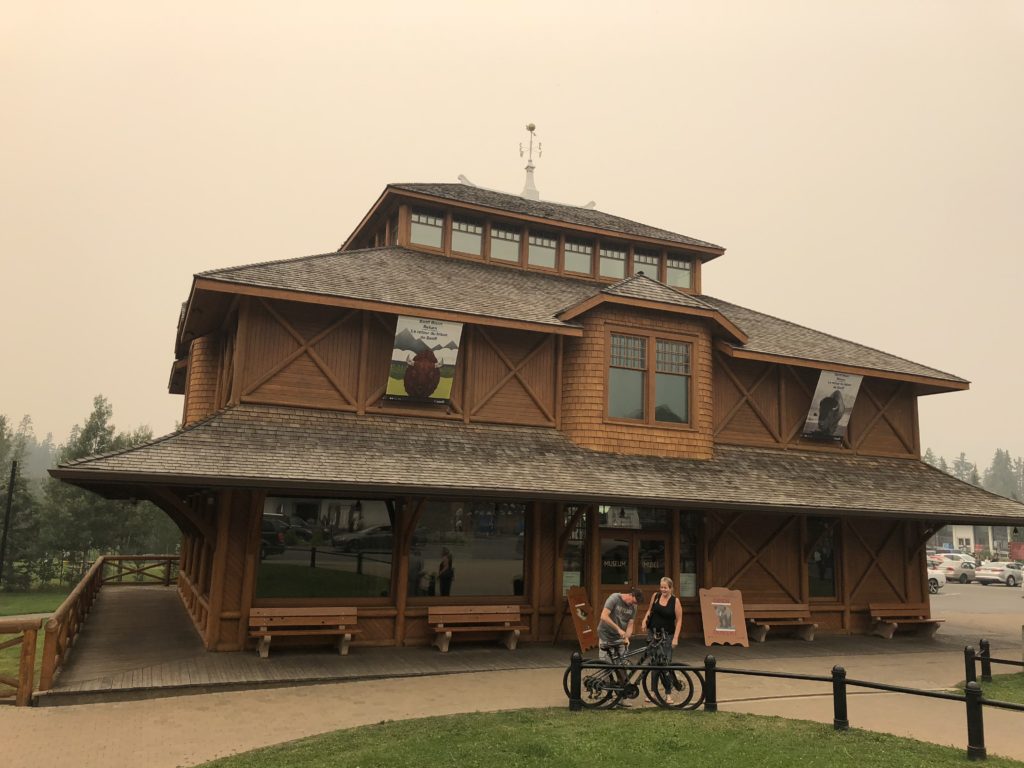
Even the McDonald’s has some style.
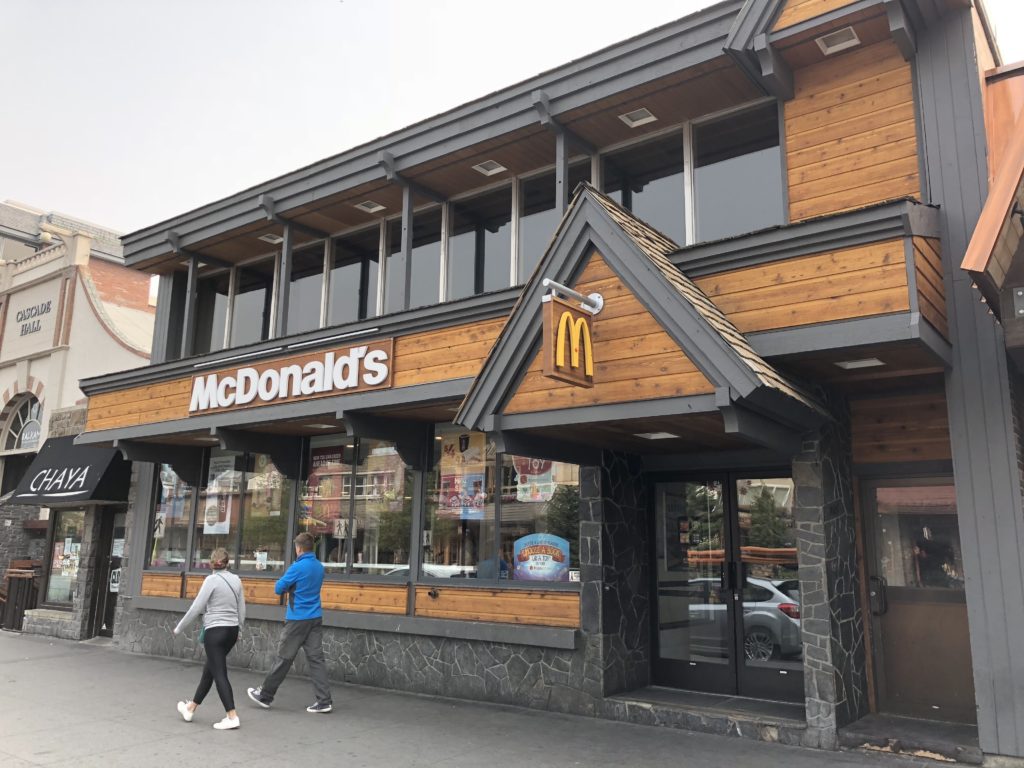
I think that the beauty of Banff is explained by three features: its remote location, high elevation (1,400m), and the fact that the town is encircled with striking, often snow-capped mountains. Hiking is the best way to take this all in. Our first hike was up Tunnel Mountain, a short 60 minute hike from town.
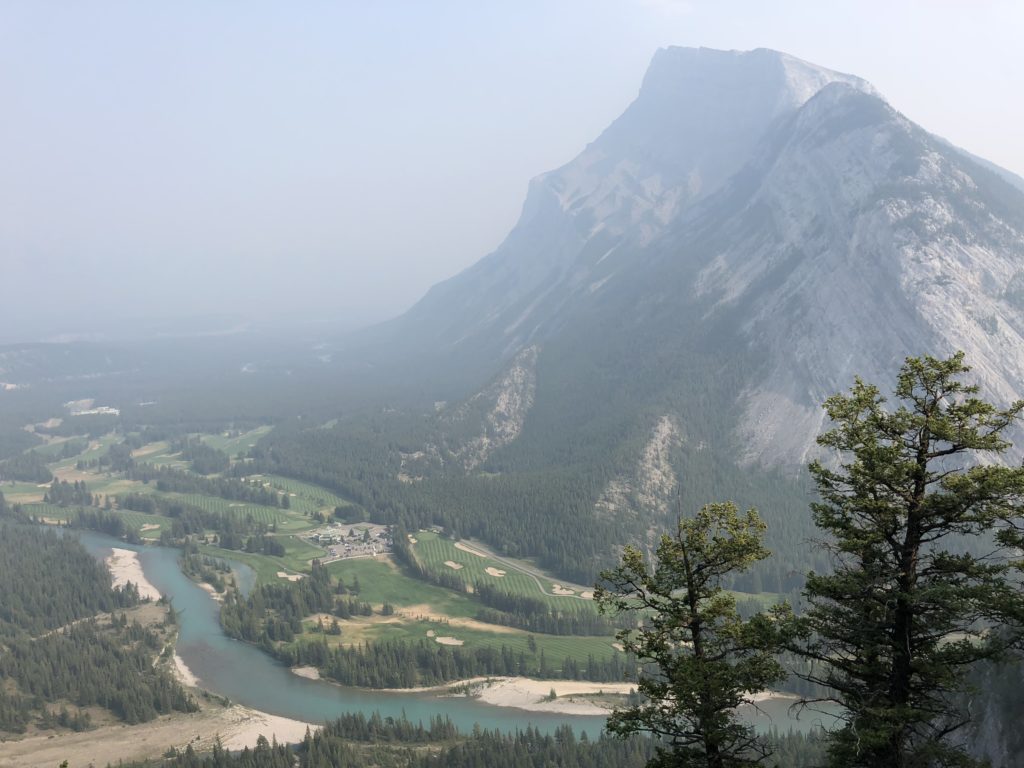
From Tunnel Mountain, you get views of Mount Rundle and its impressive peak (above). The town of Banff actually starts a little to the right of the photo. You can again see some haziness in the picture. It results from forest fires in the area. In fact, when we were in Banff, there was a major forest fire in the neighboring national park which made it a bit more hazy than our time in Glacier.
Our second hike started fairly flat, leading us along the Bow River for a long stretch before turning up towards Sundance Canyon. The Bow River is a brilliant turquoise green colour.
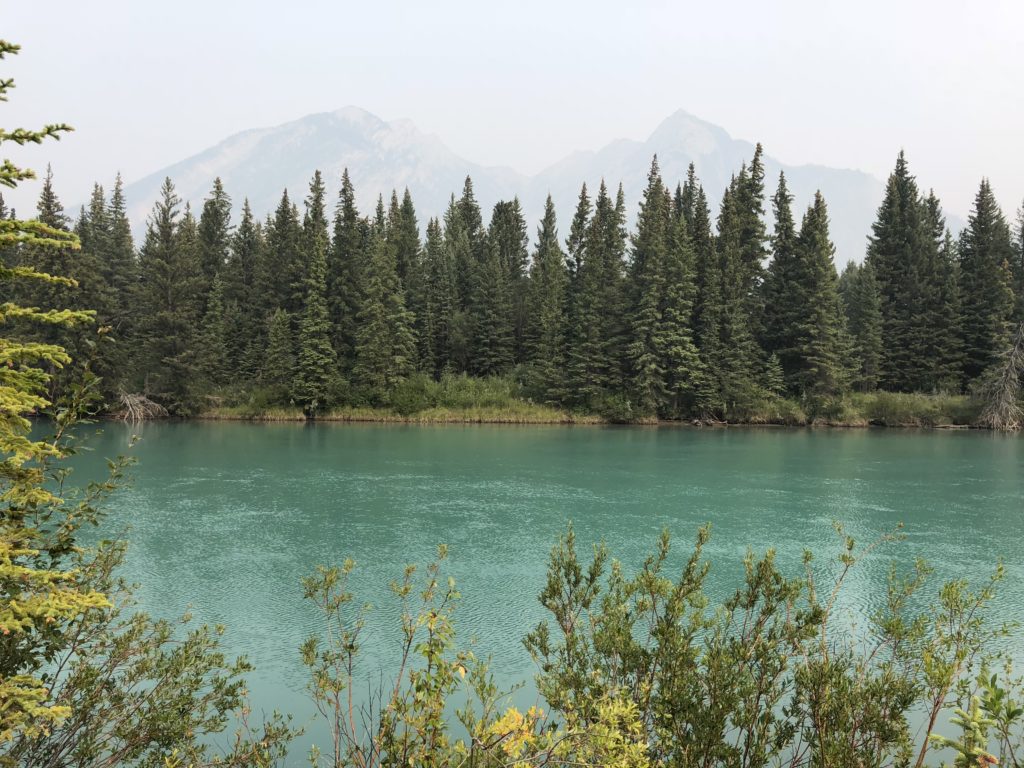

For our third hike we headed up Stoney Squaw Mountain, through quite thick forests to a beautiful view of Cascade Mountain.
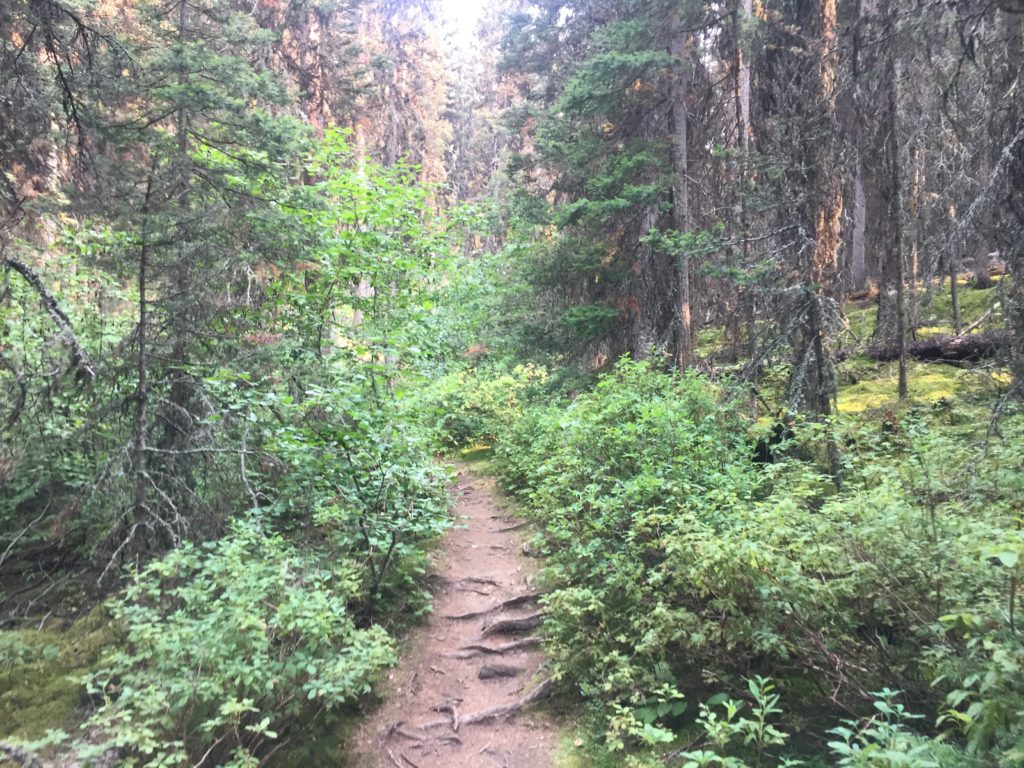
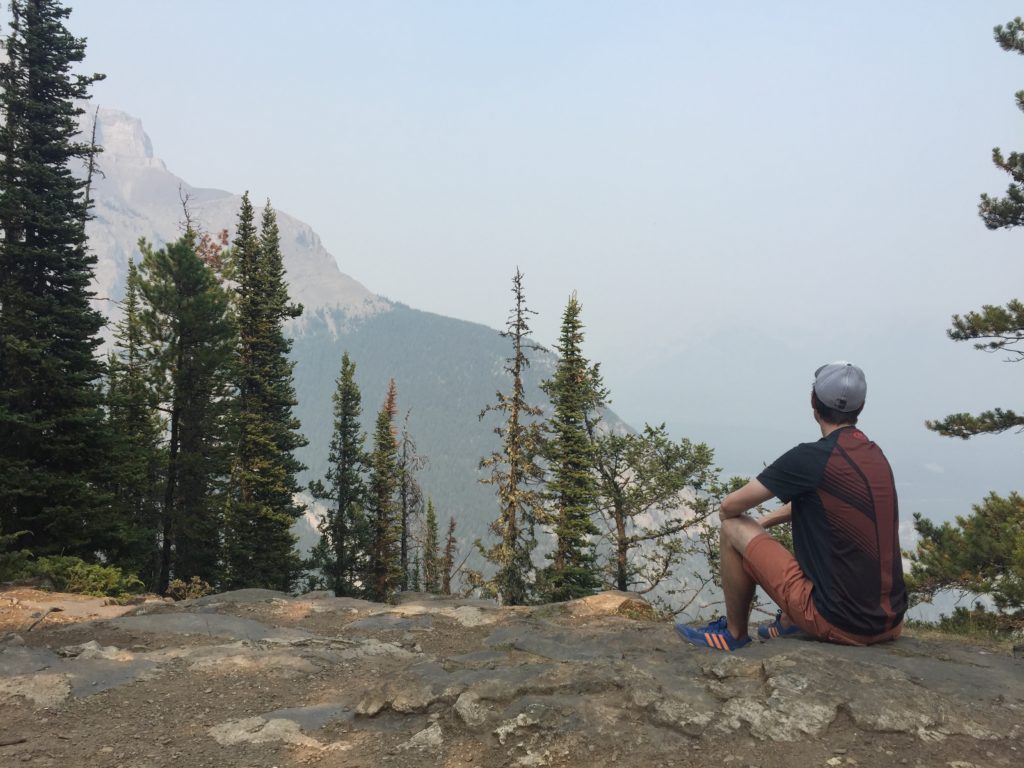
In terms of wildlife, Banff is prime bear-spotting country – both black bears and grizzlies. People wear bells on their shoes or carry bear spray in case of an encounter. We were continuously on the lookout, but unfortunately (or fortunately?) never came across one. I did read in one of the park guides about what to do if you come face-to-face with a bear on a hiking trail. Here’s the experts’ advice:
- First, move off the path and out of its way in the hope that it passes by. This seems hopeful.
- Second, talk to the bear in a soothing soft tone, suggesting that you are not a threat. This seems like it would be difficult to carry out.
- Third, kneel down with your hands around your head and lower your head to the ground making a ball. This one sounds doable.
- And if that doesn’t work and its starts attacking, the literature says to “fight back!”. I guess its better than saying “prepare to die”.
The key point is to not run away. Bears apparently have an instinct to chase down things (or threats) that run away from them. Despite not meeting any bears, we saw a bunch of wildlife. Here is a cool family of Bighorn sheep.
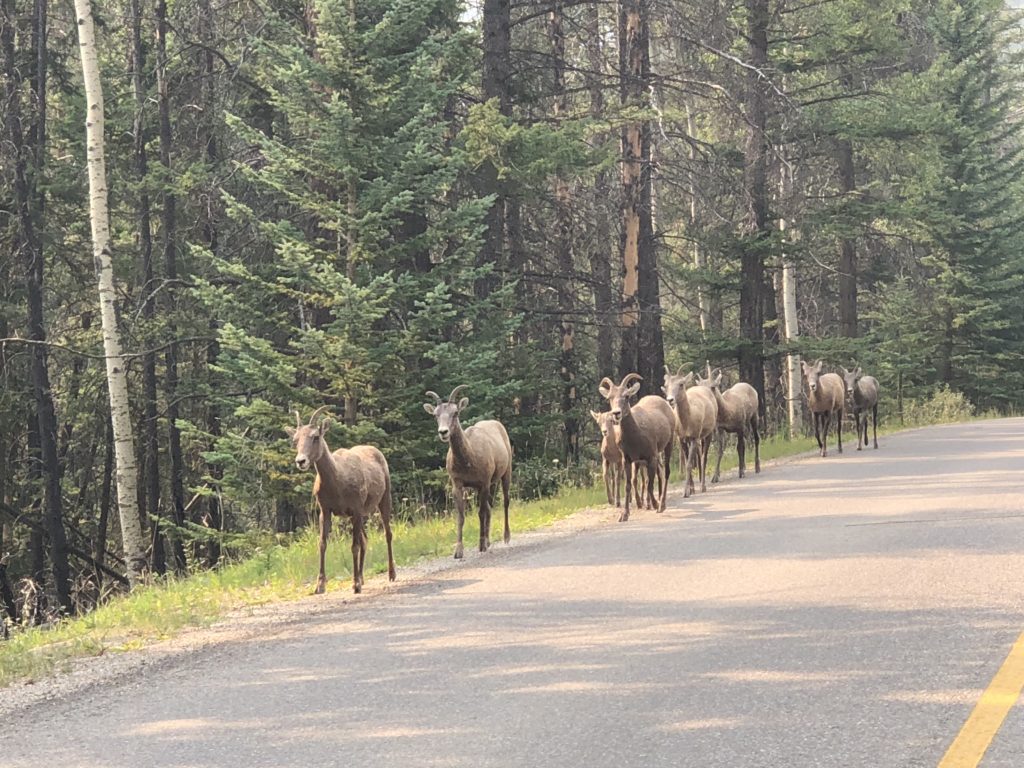
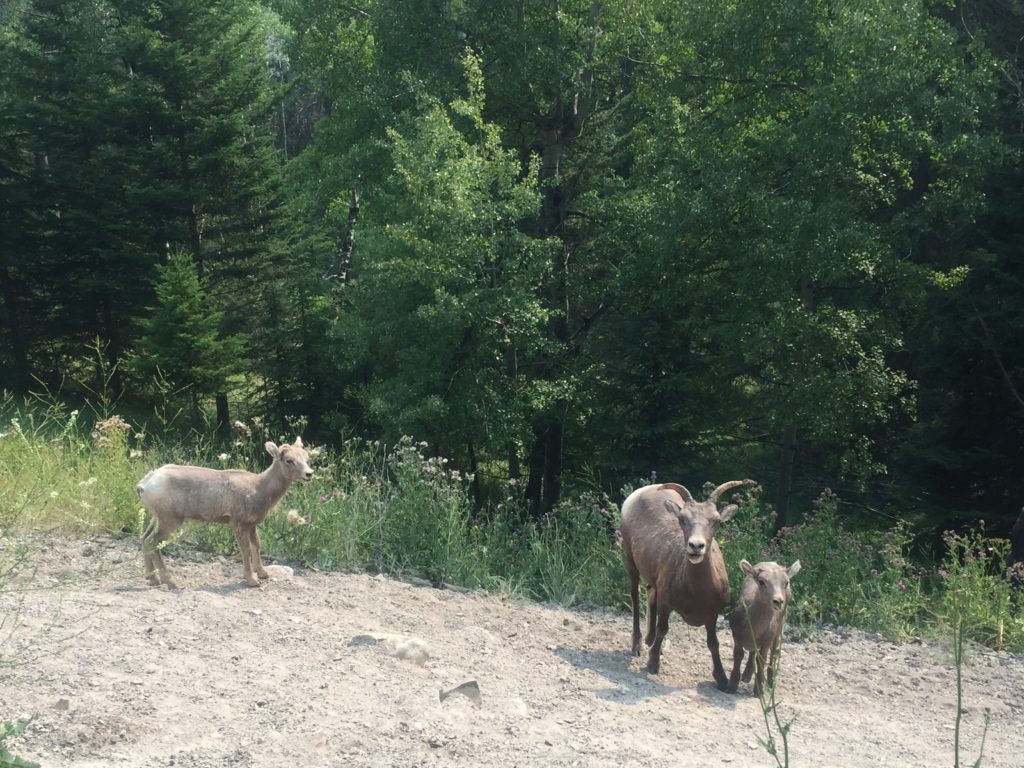
There’s a lot of ways to celebrate the completion of a good hike in the Canadian Rockies. We gravitated towards food. Below: delicious Japanese-style ramen, “Canada’s favorite” Cow’s Ice cream, and pizza and poutine. Poutine is quintessentially Canadian, having originated from Quebec. It consists of french fries, cheese curds, and brown gravy. That’s it. Hearty calories to get you through the cold winters.

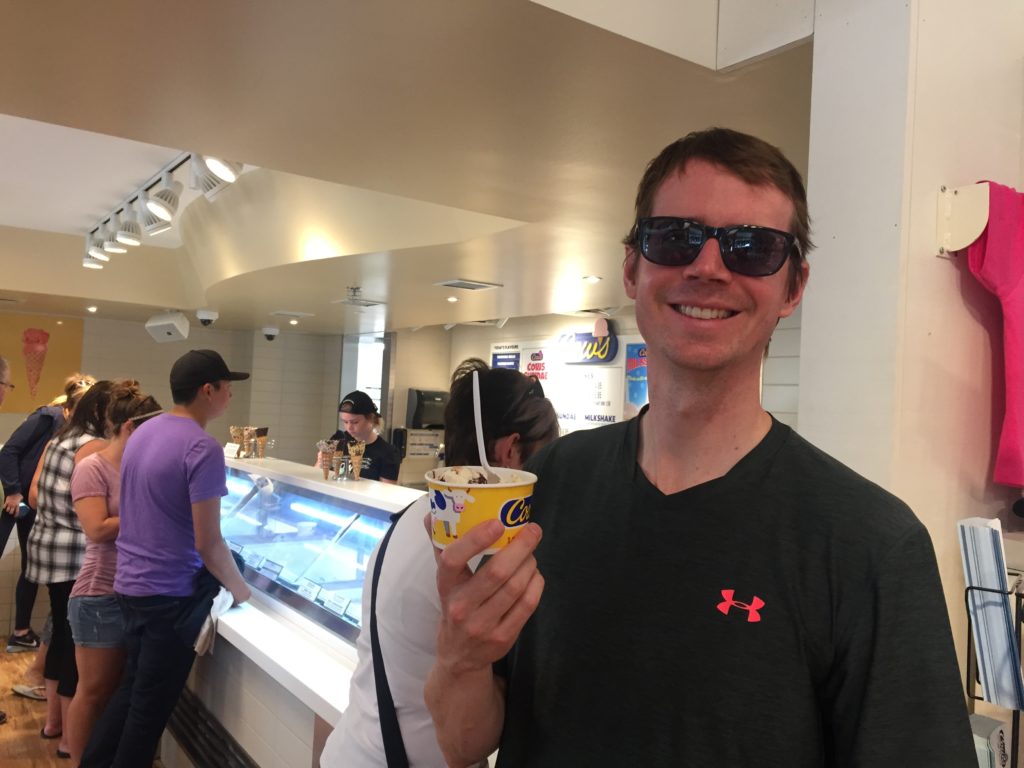

You don’t necessarily need to hike for hours to enjoy the beauty of Banff. Various shorter walks will do the trick. The first picture below is from the Vermilion lakes with Sulphur Mountain in the background.
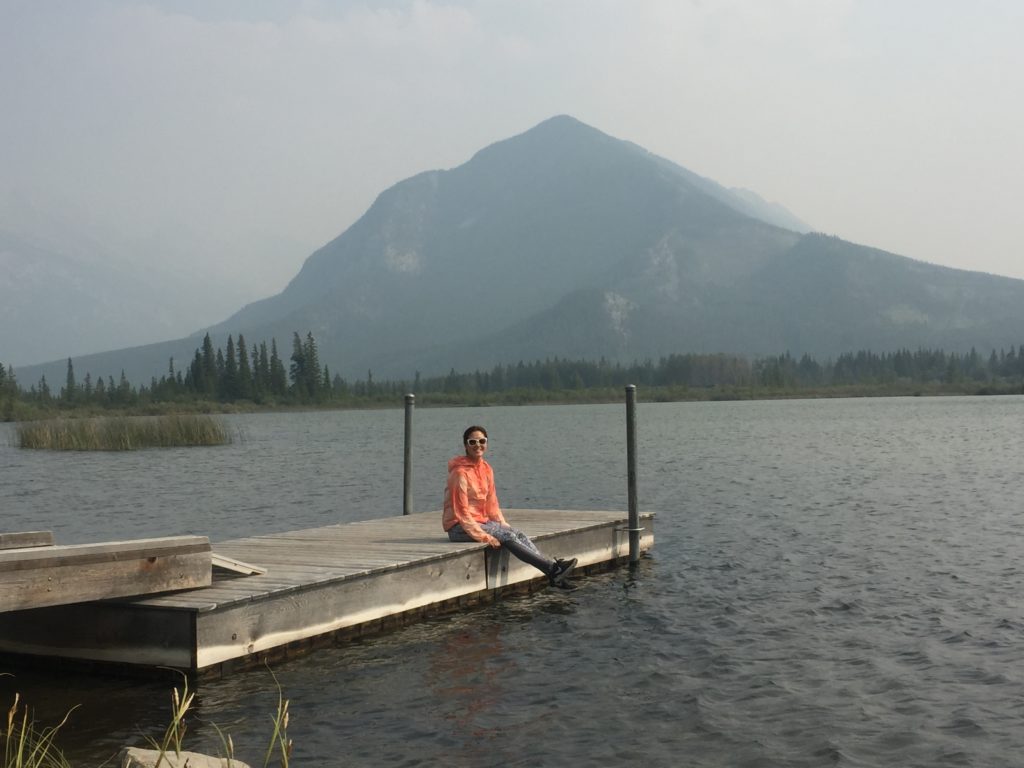
The Banff Park Administration Building in town:
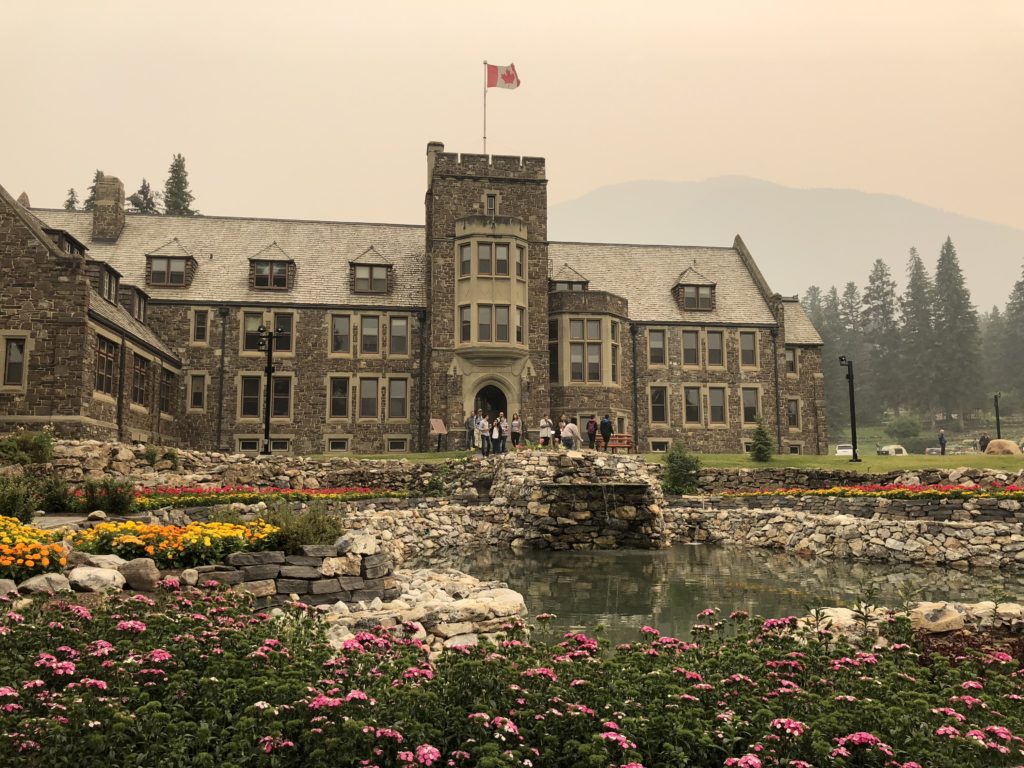
Some rapids on the Bow River close to town:

Finally, we came across this cool tradition multiple times on our trip. In the picture below, the little kid is being sworn in as a volunteer junior park ranger. The oath goes into things like swearing to protect the animals and rivers and streams, etc. This kid was into it.
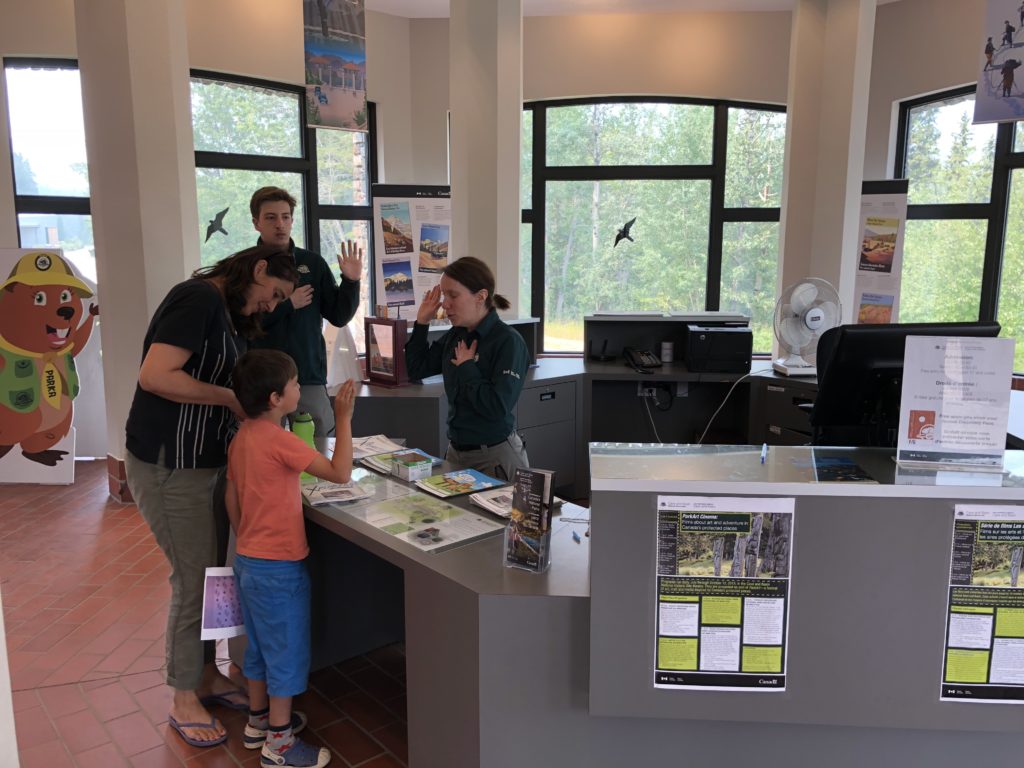
On to the big draw card of the region: Lake Louise…

